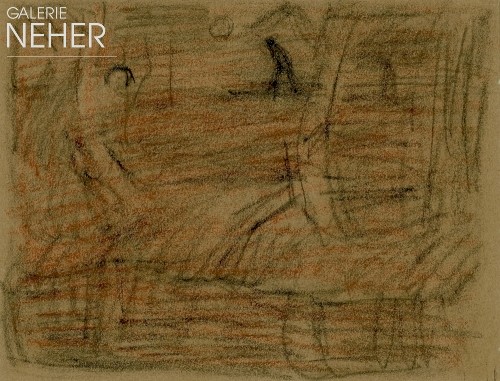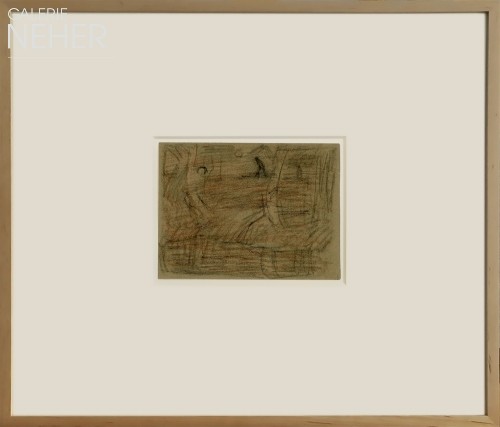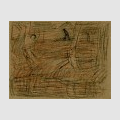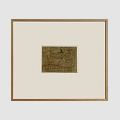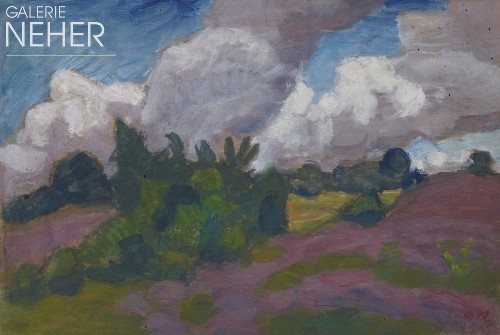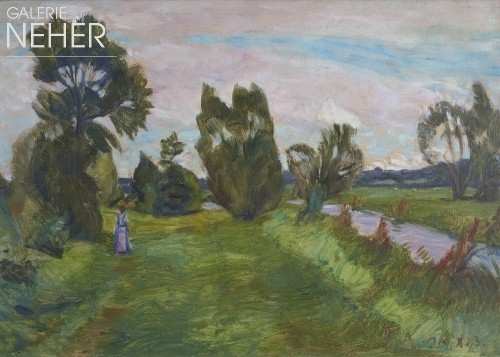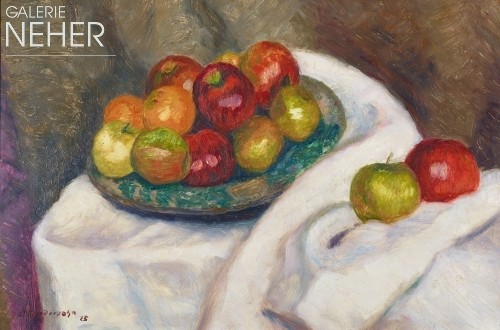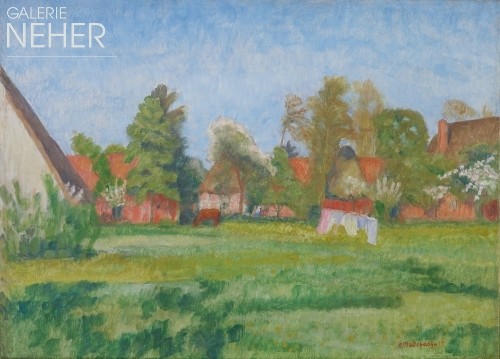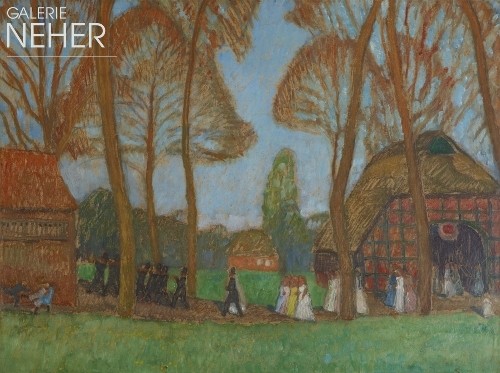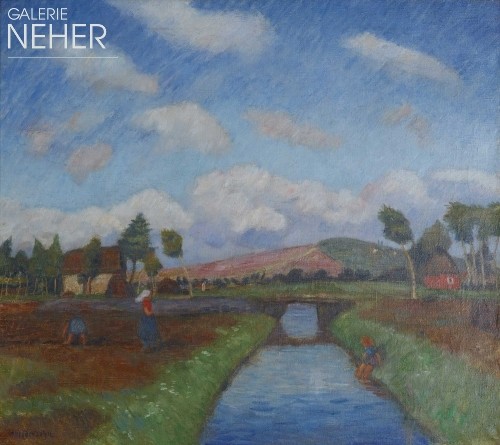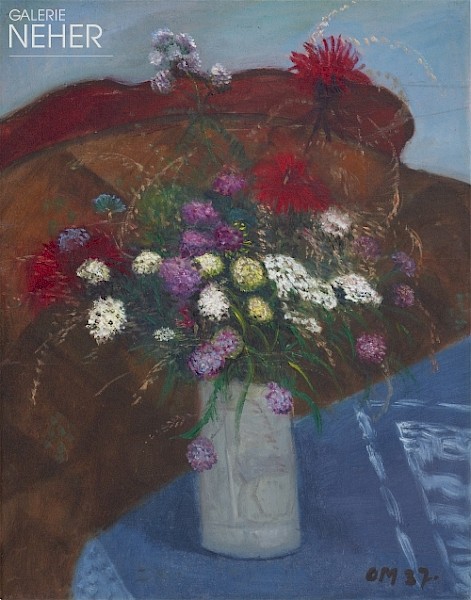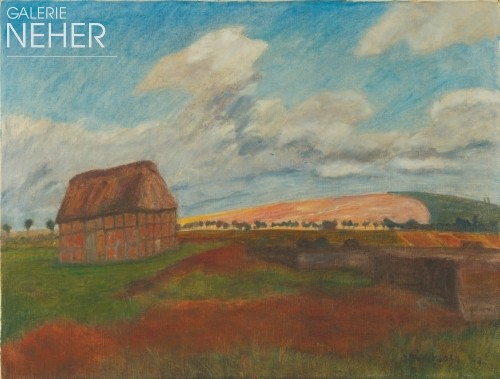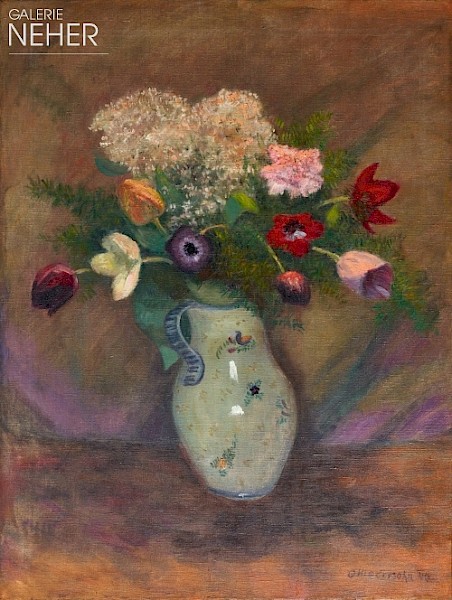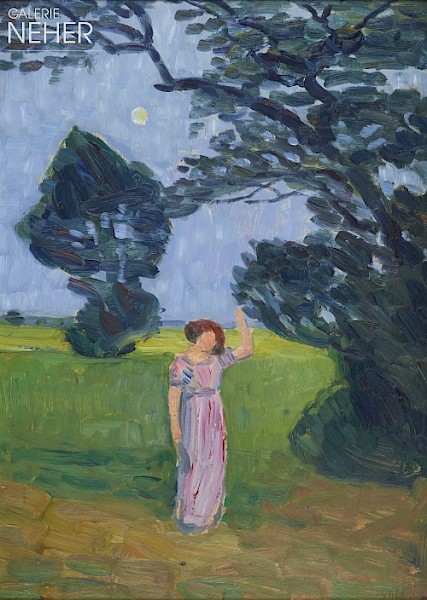Otto Modersohn - Mann auf dem Moordamm (Man on the Moor Embankment), ca. 1938
Crayon, charcoal, red chalk on paper
15 x 19 cm / framed 47 x 54 cm
5 x 7 inch / framed 18 x 21 inch
- with studio frame -
N 9149
Expertise:
Expertise Otto Modersohn Museum, Fischerhude - Rainer Noeres vom 21. März 2015
Provenance:
Nachlass Otto Modersohn
Exhibitions:
Essen, Katalog Galerie Neher, Frühjahr 2022, Kunst aus dem 20. Jahrhundert, Katalog mit farbiger Abbildung Seite 20
Otto Modersohn - Mann auf dem Moordamm (Man on the Moor Embankment), ca. 1938
Crayon, charcoal, red chalk on paper
15 x 19 cm / framed 47 x 54 cm
5 x 7 inch / framed 18 x 21 inch
- with studio frame -
N 9149
Expertise:
Expertise Otto Modersohn Museum, Fischerhude - Rainer Noeres vom 21. März 2015
Provenance:
Nachlass Otto Modersohn
Exhibitions:
Essen, Katalog Galerie Neher, Frühjahr 2022, Kunst aus dem 20. Jahrhundert, Katalog mit farbiger Abbildung Seite 20
About the work
"Drawing, drawing, and yet more drawing," noted Otto Modersohn on April 7, 1897. Drawing stood at the beginning of Otto Modersohn's artistic development and assumed a central position during the course of his career. The rather self-absorbed and retiring artist bought his first sketch book at the age of only 15. "From an early, stage I was attracted to nature which I sought out as often as I could. I was a passionate collector and observer of animals, and particularly insects and plants. On winter evenings, when I wasn't drawing, I would immerse myself in books on world history and on myths and fairytales", wrote Modersohn in 1896 in his diary.
The principal theme of his drawings was, and remained, the natural environment around him, the landscape. By virtue of his acute observations and consummate draughtsmanship, the artist succeeded in reducing his motifs to what he perceived as their very essence. Thus in addition to the oil paintings, the drawings and sketches constituted not only an important body of his work, but also afforded a keen insight into his artistic intentions. His overall oeuvre is made up of an impressive number of drawings and sketchbooks, which at the same time formed the foundation for his paintings. "I arrived at the conclusion that, where possible, an artist must draw on the situations that are familiar and dear to him for his motifs and representations", reads an entry into the artist's diary from 1887. And just as Modersohn rejected a purely naturalist painting style for himself, he also abstained from adopting the impressionist position. Modersohn's artistic ambition was, as he himself describes it, directed entirely at capturing "the thing-in-itself - and its aura". Thus, whilst clearly setting himself apart from the naturalistic form of expression prevailing in the academies at the time, he also distanced himself from the then nascent avantgarde movement. The ephemeral "retinal painting" did not comport with his desire need to divine profound insights from nature and give them visual expression in his art. The"fugitif", as Charles Baudelaire once dubbed it, the transient phenomenon, which was elevated to the constant of artistic production by the Impressionists, held less interest for him than the interior world.
Otto Modersohn's body of drawing can be divided into three categories. In addition to the studies from nature and the drawings, which served as preliminary sketches for his oil studies and subsequently for his oil paintings, he also crafted free compositions. In each phase of his artistic production, he fashioned works in all of these different styles. This present drawing was completed during Modersohn's time in Fischerhude, to where he moved following the death of his wife Paula Modersohn-Becker in 1909. Despite the rapidly executed line hatching, the sheet appears to be clearly structured. The striking vertical and horizontal pictorial elements harness the powerful intensity of this small-scale work. The "man on the moor embankment" remains as background, allowing nature itself to take centre-stage.
Text authored and provided by Dr Andrea Fink, art historian
The art historian, curator and freelance publicist Andrea Fink studied art history, cultural studies and humanities, modern history and philosophy in Bochum and Vienna. Doctorate in 2007 on the work of the Scottish artist Ian Hamilton Finlay. As a freelance curator and art consultant, her clients include, among others, the Kunstverein (art association) Ahlen, Kunstverein Soest, Wella Museum, Museum am Ostwall Dortmund, ThyssenKrupp AG, Kulturstiftung Ruhr, Osthaus Museum Hagen, Franz Haniel GmbH, Kunsthalle Krems, Austria.
